
Caveat
Its time to Join the MOB; Mobile Off-Shore Base, That Is
Caveat

America is being bankrupted by military incompetents who insist that we have 120, 000 troops in Iraq and 100, 000 troops in Afghanistan to prop up corrupt governments there that is costing us over $100 BILLION a year that only lines the pockets of war profiteers making junk trucks that are restricted to roads/trails and murders our troops, whose deaths enrage the gullible American populace to want to "kill more ragheads". The problem is that Iraq did not have anything to do with the September 11, 2001 attacks on America, nor were the CIA created and funded "al whatevers" from Afghanistan the chief instigators, either. The building explosions on 9/11 were false flag attacks instigated by the U.S. Government (USG) and its fellow AmeroNazi corporate criminals to feed their own greed and ego by seizing the oil and drug resources of Iraq and Afghanistan while creating insurgencies for Americans to ride in wearing the "white hat" to play either the military or humanitarian assistance "hero".
The AFPAK "Gordion Knot" Mess
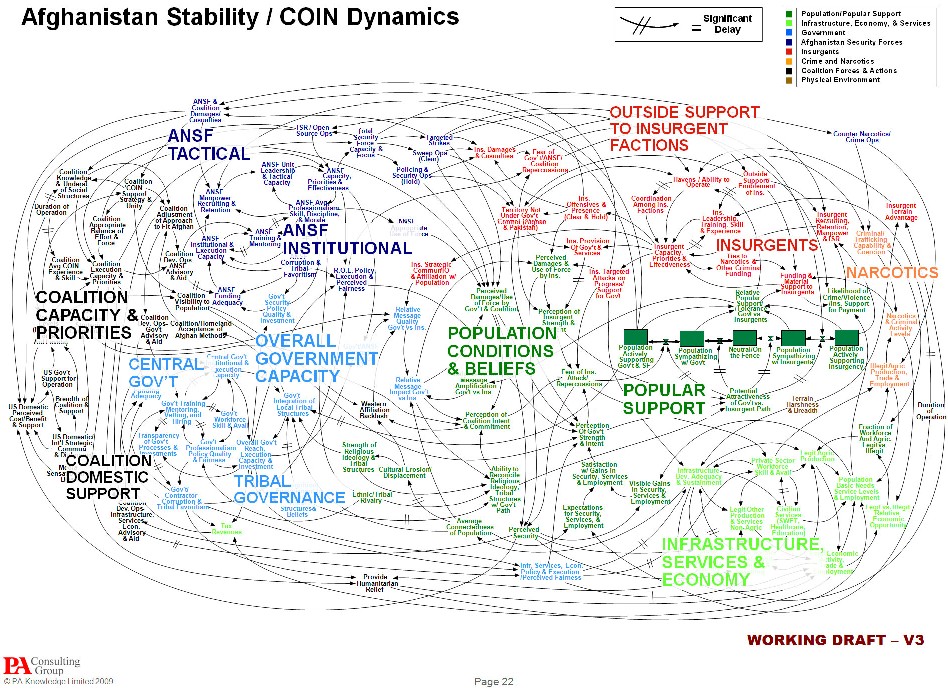
The southern half of the U.S. are populated by AmeroNazis who have no clue about what being an American who follows his moral conscience based on FACTS is all about; they want to blindly follow a mythically exceptional king/queen/mommy/daddy/dictator/government so they can live lives of materialistic consumption and false heroics. They are not innocent in any of this. The AmeroNazis are run by the Rockefeller Illuminati crime family that is obsessed with violence (they put Hitler into power to instigate WW2) that wants ultimately for nuclear war to break-out between Pakistan's 180 million and India's 1, 200 million people to depopulate the world towards their goal of 6 billion murdered from the current 7 billion--so the world will be more comfortable for them to rule.
Application
At face value (AFV) there is no morally-sound reason to occupy Iraq--but as President Obama stated in his recent address to the nation from the United States Military Academy at West Point, New York, "Afghanistan is a threat to the U.S."--if you believe the delusion that the 9/11 attacks were staged from there--so therefore, we must "flood-the-place with U.S. troops". AFV, this is also a lie because the only military options available to us are NOT just to flood tan and green Afghanistan with American gunslingers wearing absurd Army ACUPAT gray or to leave. Our only options are not just to either occupy or leave. If AFV, Afghanistan's instability were indeed a threat to U.S. citizens by sub-national terror group attack, then this could be solved PRE-emptively by building a sensor-security fence system to secure its borders from Pakistani "Taliban" Islamics directed and funded by the CIA franchise operation, the ISI. Details:
AFPAK Solution #1
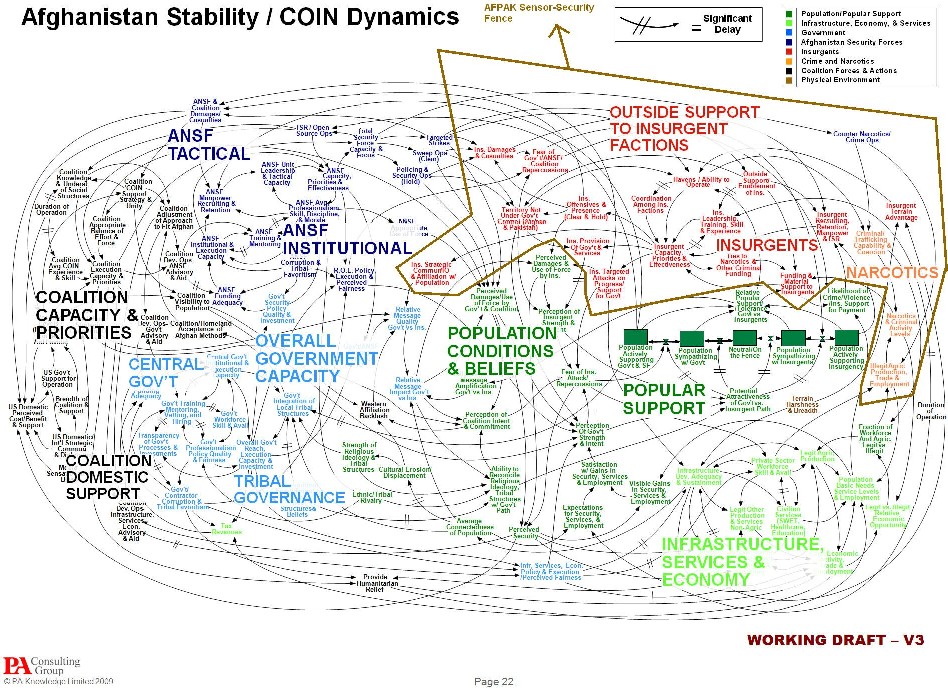
If however, the REAL situation is the Pashtun tribes don't want to be a part of the drug-corrupt Karzai central government, then give them a chunk of land they live on and build the sensor-security fence in front of them--and wish them a happy Islamic life. Bye Bye! We have done this before to places like East Pakistan that became Bangladesh, so don't say it cannot be done when its done all the time. Detach "Pashtunistan" from Afghanistan and tell them they are no longer a part of the Afghanistan nation-state. If President Karzai wants to keep the $60B a-year drug trade flowing out of Afghanistan he can have his border guards look-the-other-way at sensor-security fence checkpoints. However, America would have provided TANGIBLE and COMPETENT military assistance--and could then promptly leave Afghanistan to the Afghans so we are not going broke keeping the place flooded with U.S. troops and nation-builders.
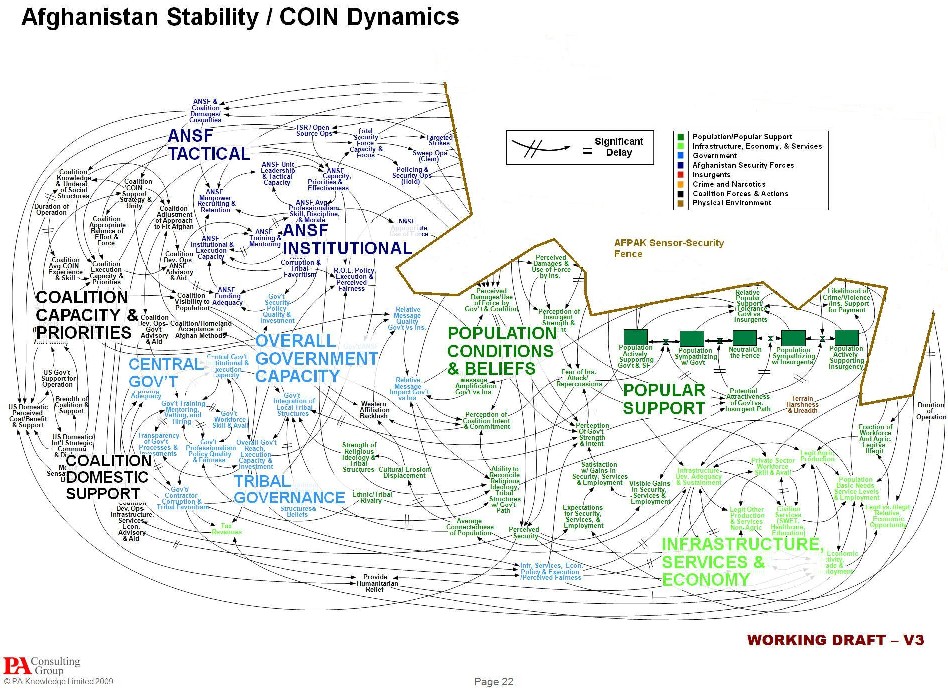
Of course, the sensor-security fence system would stabilize AFPAK and help pre-empt an Indo-Pakistan nuclear war by forcing Islamics to "get a life" and stop playing Mujihadeen in their neighbor's backyard. The secret elites will of course, not want to pre-empt the disaster they lust for.
AFPAK Solution #2: QRF in the Region
Moreover, there is also a POST-emptive military option for Afghanistan--we can have a large Quick Reaction Force (QRF) nearby ready to strike IF (ha ha) the "al whatevers" should attack America--ie; the traitors within stage another false flag attack. AFV, we could then drop Paratroopers with light tanks and shoot up all the evil commie, ehh ragheads we want to appease American people blood lust for "revenge" against the designated patsies--and then leave. We would not squat on the local people's land with humongous Forward Operating Bases (FOBs) complete with slices of consumerist garrison Americana that incites rebellion and guerrilla wars. The QRF would be based nearby AT SEA and not irritate anyone by occupying someone else's nation-state lands.
Now apply the caveat. The sound military options of sensor-security fence and at-sea QRFs contradict the goals of the secret elites to destroy the individual of conscience, max profits and de-populate. In contrast, a MORAL and PROFESSIONAL military man should offer to do them if nothing else but to EXPOSE THE BANKRUPTCY of the false military options of either occupation or abandonment. Its time we leave one "mob" and join another--the Joint Mobile Offshore Base or "MOB" for short. It would be a reduced-size racket that we can afford and it would be MORAL.
Why a MOB?
The first question you may ask is why not just stage aircraft carriers with marines continuously in the Indian ocean to respond to any sub-national conflict (SNC) threats?
The USN and Mc are incompetent--in 1991 during Operation DESERT STORM Saddam's sea mines put into the water by backing trucks up exploded several Navy ships and the marines couldn't even land. Even if they somehow could be put ashore, the marines will have their asses kicked as we saw in 1975 when they landed in USAF helicopters onto Koh Tang island beaches covered by enemy machine gun fire. Several flaming helicopters and burnt bodies later, the marines themselves had to be rescued just before being over-run, but at the cost of 10 marines left behind on the island. Even if the marines made it ashore, they will foot-slog and drive in wheeled trucks or bloated amtracks getting themselves killed by land mines, RPGs and automatic weapons attacks as we see daily in Iraq/Afghanistan against mere rebels. How the USMC would suffer against a nation-state war enemy can be seen in the 1961 Bay of Pigs fiasco where they trained and advised a Cuban brigade made into mirror images of themselves that soon found itself surrounded by Castro tanks and pinned down by high explosive (HE) artillery fire as they ran out of ammo. Details:
combatreform.org/airbornebayofpigs.htm
The point is the USN/Mc WW2 Iwo Jima re-enactment racket is FUBAR; after all these years and $BILLIONS of dollars, at best it can plop simplistic foot-slogger victims ashore--because HQMC cannot make its mind up if it wants to be a highly-skilled commando force or a mini-land maneuver army--so it does NEITHER.
combatreform.org/AIRBORNEMUSEUM/sld026.htm
This military incompetence is a function of malignant narcissism that drives USMC culture based on the lie of WW2 that naval power in the side-show war against the low-tech Japanese in the Pacific was somehow decisive when it wasn't even relevant to the actual mortal threat high-tech Germans we fought in Europe. Even in the Pacific, the war was won primarily by the U.S. ARMY and its AIR FORCE under General MacArthur who maneuvered troops to take LAND BASES where runways and ports were then built and full-power aircraft and land maneuver combat forces were deployed. Details:
combatreform.org/midwaymyth.htm
Don't get me wrong, the USN/Mc are also without a convenient small ship excuse; they could be loading up their amphibious ships with light tanks with cross-country mobility and armor protection to be a kick-ass cavalry force that could force its way ashore and maneuver with overmatch against any opponent--SNC or even nation-state war (NSW)--but the weak USMC ego wants to rifleman foot-slog. Details:
combatreform.org/ARMORHISTORY/amphibiousinfantrytanks.htm
On the Navy side, there are limits to the type and QUALITY of aircraft that can be shot into the air from their aircraft carriers (ships with short runways on top). Planes that are shot into the air by CATapults and ARrested by tail-hooks and wires (CATBAR) compromise their flight performance by the weight of their landing gear and structural strengthening required to crash onto the deck again and again. Moreover, their overall size is limited to less than 2 engines due to the size limits of the carrier itself. The Navy is further at fault here for not fielding contra-rotating prop engines from the British to get more power for its planes in a more compact size and for its carrier "mafia" bureaucracy eliminating its seaplane rivals out of existence. Details:
combatreform.org/p6mseamaster.htm
A seaplane isn't size-limited by a carrier deck and has the entire ocean to land on and could be very large to bombard the enemy more efficiently than launching lawn-dart, fighter-bombers and can deliver troops with light tanks ashore--IF the corrupt USN and MC were interested--which they are not. Details:
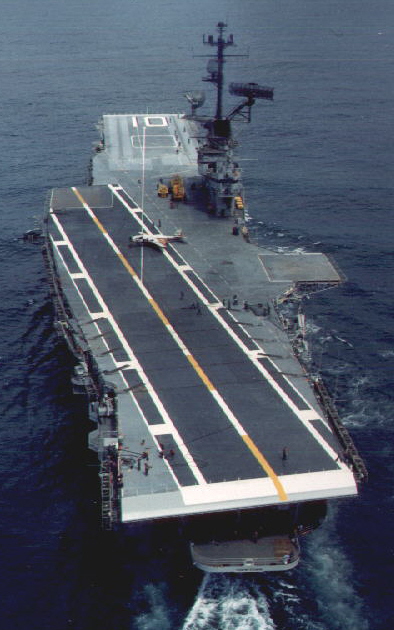
The proposed British Habakkuk carrier dwarves a Nimitz-class carrier above and an Iowa-class battleship below
The crafty but cash-strapped British realized this in WW2 (we still haven't realized it). The essential functional problem of an aircraft carrier is its not LARGE enough to carry full-performance, land aircraft but must carry compromised designs that lack punch. One of their inventors discovered that if you mix ice with sawdust it doesn't melt right away. He suggested that a HUGE aircraft carrier be built for the cold North Atlantic so full-sized 4-engined patrol planes could operate there and smother the German submarine (U-Boat) threat that preyed on the gaps in our air coverage created by the range limits of these patrol planes operating from land. While being a giant ship, it was in fact a mobile offshore base (MOB).
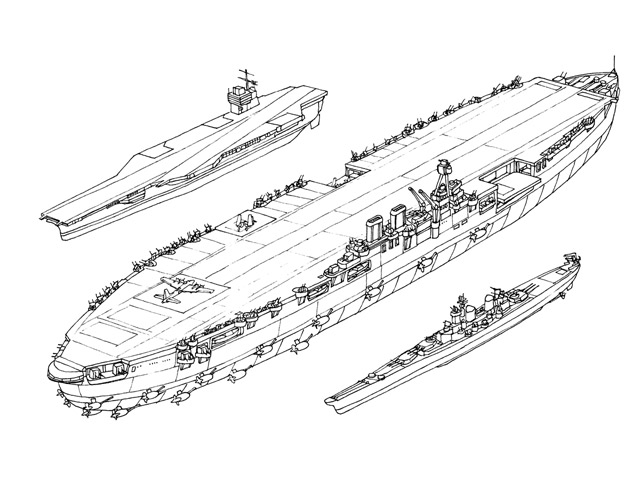
Today, we can create a huge MOB without having to resort to ice using off-shore oil drilling platform technologies. Popular Mechanics magazine reports on the Joint MOB proposal underway in DoD in 2003--before Iraq land base racketeering took over:
popularmechanics.com/technology/military_law/1281531.html?page=
Logistics are and always have been the key to success in modern warfare. So there is much about the JMOB that impresses military planners. BWX estimates that a 5-module JMOB would have room for 3, 500 vehicles, 5, 000 cargo containers and 150 aircraft. Of the 5 million sq. ft. of space, 3.5 million sq. ft., roughly 80 acres, would be climate controlled. It would be so large that the military could pre-position 300,000 tons of equipment, 75 million gal. of fuel and 50 million gal. of potable water, says LaPlante. The ONR estimates a JMOB could house an Army heavy brigade of about 3, 000 troops.
New Design Rules
The multiple functions and extreme size of a JMOB would make it unique among floating structures, says Dennis Wright, a vice president for Houston-based Kellogg Brown & Root, which says its expertise in designing deep-water drilling platforms is the key to linking modules at sea.
The ONR mission statement that has guided the project's development since 1996 gives some idea of what is involved. In addition to being massive, the JMOB would have to be stable enough to allow fixed-wing cargo aircraft, such as a C-17, to operate in Sea State 6 conditions. Sea State numbers run from 0 (dead calm) to 12 (hurricane conditions). Sea State 6 is characterized by 22- to 27-knot winds, and white, foam-crested, 10-ft. waves with sea spray.
Experience in building large containerized cargo vessels and precisely positioned deep-water oil-drilling platforms has solved most of the engineering problems. "It is a proven commercial technology," says Wright.
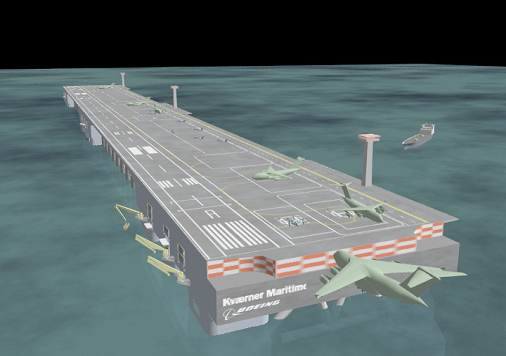
The big challenge will be connecting them. And, once assembled there will be the problem of long-term, station-keeping during hurricanes and other severe weather conditions. Because U.S. forces train to fight in all weather, JMOBs must be capable of transferring personnel and materiel to shore-going vessels in conditions up to and including Sea State 3. Finally, each unit must be built to take the punishing conditions of ocean life for 40 years.
Thus far, computer simulations and hydrodynamic tests of a one-sixtieth-scale model by the Naval Surface Warfare Center have confirmed that a floating base is workable.
While the Navy has yet to sign off on the project, insiders tell Popular Mechanics that as much as $1 billion could be earmarked for acquiring the first building blocks of a floating fortress--as early as the end of the decade.
Unfortunately, the USN ship racketeers are NOT going to sign-off on anything that threatens their BS aircraft carrier racket. Their greed and ego will not allow it, so the U.S. ARMY should be the ones who own and operate the MOB as a defacto artificial LAND base. Estimates are that the MOB can travel at 15 mph so in a 24-hour period, it could be 360 miles away from its last location to evade targeting by potential enemies. The MOB's primary use would be for SNCs; in NSW, it could be used against less sophisticated enemies lacking long-range precision guided weapons; if not, the MOB can move to safety outside of PGM range or even move back to the U.S. While anti-PGM missiles are a must, its unwise to expect them to stop all threats and foolishly stay in the area as the USN assumes with its flimsy surface ship mentality.
Benefits of an U.S. Army MOB
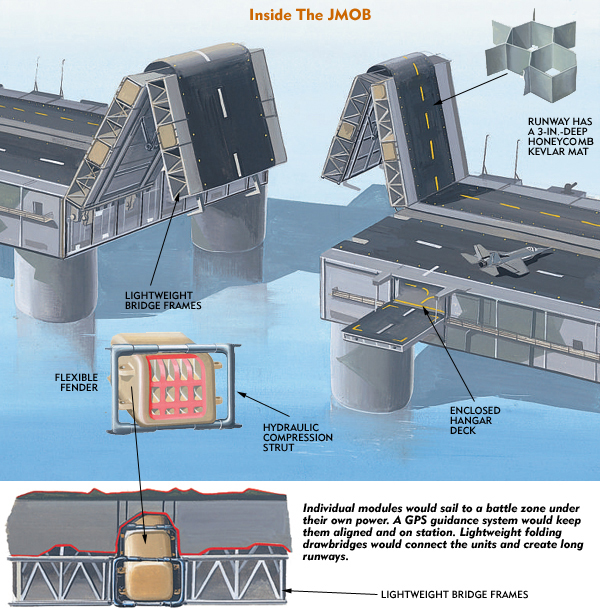
SNC
The QRF manning the MOB in the Indian Ocean could be either based around C-130 air transportability (light tanks under 20 tons) or C-17 air-transportability (under 70 tons). We can parachute airdrop vehicles up to 30 tons, so a stripped-down Bradley fighting vehicle is a possible ground platform though the 10.5 ton M113 Gavin which can be flown by C-130s should be the baseline since there is no performance advantage to be gained by the flawed design Bradley heavier vehicle. A Gavin Brigade Combat Team (GBCT) would be ready to take-off immediately from the MOB and parachute drop anywhere within C-130 and/or C-17 range to raid, kill and capture enemy sub-national groups and then return to base. Fitting an air-cushion landing system (ACLS) to the C-130 would speed the recovery of the GBCT by enabling almost any flat area to be an assault landing zone; not just ones whose ground is firm enough for the wheels supporting a 150, 000 pound Hercules transport. Details:
Escorting the GBCT force package could be any USAF fighters; be they F-15s, F-16s, F-22s, F-35s or something new like Sprey's Swarm Fighters. Providing close and maneuver air support could be A-10s or something new like Myers' Killer Bees/ASPs. Details:
combatreform.org/killerbees.htm
combatreform.org/killerbees4.htm
On-the-ground, the GBCT would fire & maneuver with superior, cross-country mobility to avoid land mines on roads to hit the enemy where he least expects it, denying him the sanctuary of closed terrain types by virtue of its M113 Super Gavin low-ground pressure, stealthy band tracks. Though light, the Super Gavins would have superior protection by v-hull shaping and multiple armor layering that wheeled trucks are 28% less capable of. Powerful high explosive (HE) shells from Super Gavin automatic cannon and 120mm mortar tubes would reach out into high ground hills and mountains or through thick mud walls to suppress or flush-out rebels so our dismounted infantry can finish them off.
NSW
The Army owns the world's largest fleet of logistics over-the-shore (LOTS) landing craft and barges to make floating causeways. The Army has cargo ships with pre-positioned vehicles and supplies to formulate full-power land brigades ashore. The MOB would be a launching pad for the QRF GBCT to seize & hold both air-heads and beach-heads for the APS-3 ships to off-load and the Soldiers to operate them to marry up.
An even more bold action would be for the QRF GBCT to 3D seize & maneuver deploying from the MOB to locate and kill/capture enemy leader fleeing from our 2D maneuver push coming ashore from the APS-3 re-constituted brigade.
Summary/Conclusion: the MOB doesn't want the MOB, We Should do it Anyway

This proposal will not be evaluated on its merits because they scream out for its implementation. The MOB option for Southwest Asia to have a QRF would be morally, financially and militarily sound--which the mob that runs the world into ruin is against. Let it be known and for you the reader to be aware--that this notion that the only military options for us in Afghanistan is to either occupy or depart is a lie.
We need to join a new MOB; one that wins.
"The ultimate measure of a man is not where he stands in moments of comfort and convenience, but where he stands at times of challenge and controversy.
Cowardice asks the question - is it safe?
Expediency asks the question - is it politic?
Vanity asks the question - is it popular?
But conscience asks the question - is it right?
And there comes a time when one must take a position that is neither safe, nor politic, nor popular; but one must take it because it is right."
--Dr. Martin Luther King
WW2 RetroThink: Mobile-Offshore Bases by Liberty Ships?
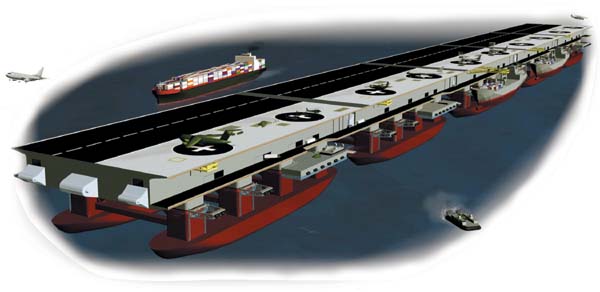
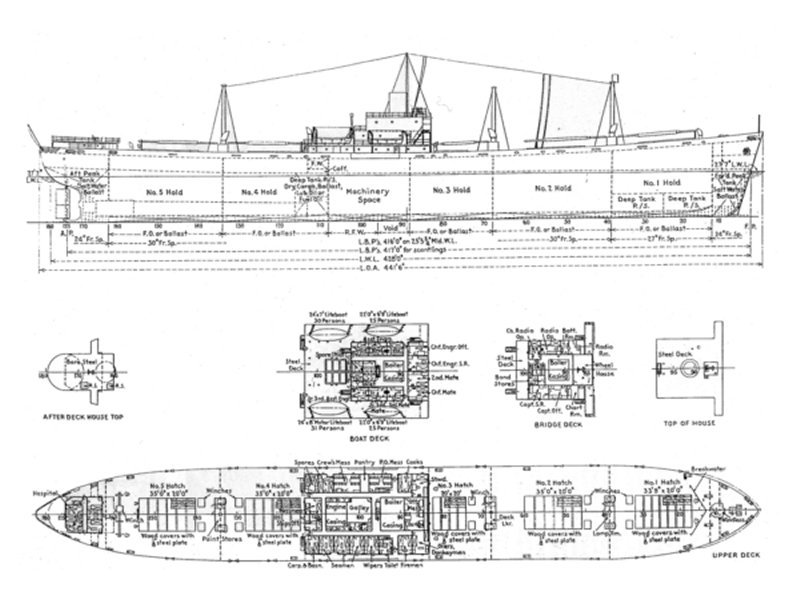
It's very rewarding and enlightening to examine what the creative heroes were able to do in WW2--the last time so far when the common man was allowed to have a say in how the world runs. Since 1945, the evil Illuminati have saw to it that only small elites in bureaucracies get to drive what is done--or not done so problems are deliberately not solved but milked for maximum profits. One of these lying bureaucracies is the U.S. Navy's "aircraft carrier mafia" that has ever since WW2 boasted that they had won the war in the Pacific single-handedly--a lie only surpassed by the separate service USMC bureaucracy which beats-their-chest about winning the same war...when the truth is that the entire Pacific War was a SIDE-SHOW to con the high-technology Nazi Germans to declare war on us with the baited attack at Pearl Harbor. A land bridge of islands extends from Pearl Harbor down to Australia that the wise U.S. Army war planner General Dwight Eisenhower realized immediately was the key, so he dispatched U.S. Army troops there immediately after Pearl Harbor to hold them by land-based air power.[1] These U.S. Army troops were the first-to-fight long before the lying USMC appeared at Gudalcanal in August 1942. U.S. Army troops had already defeated the Japanese--on offense--with Australian troops at Milne Bay long before the lying gyrenes showed up.
The USMC in the Pacific Myth
U.S. Army the First-To-Fight @ Milne Bay
 http://youtu.be/huaWOyDzm1c
http://youtu.be/huaWOyDzm1c
That the war in the Pacific turned just because the carrier mafia sank a handful of Japanese carriers at Midway is yet another lie. American Army troops were already evicting the Japanese by hopping from one island to another using land-based aircraft to cover their maneuver. For the Navy carrier mafia to lie that Midway was "the turning point" and try to reverse-engineer a purpose for their carriers is classic disinformation racketeering; aircraft carriers were not then--and certainly not now--needed to conduct air operations or Airborne or Amphibious assaults--even over areas filled with thousands of miles of water.
The Midway Myth
combatreform.org/midwaymyth.htm
Moreover, to artificially handicap itself into greater dependency upon carriers, the aircraft carrier mafia has dismantled both its ship-based short-range and long-range seaplanes--damning our Sailors and marines to watery deaths in event they face a real shooting war against competent opponents armed with guided weaponry that cannot be stopped because we lack enough air cover.
Where are our Seaplanes?
combatreform.org/p6mseamaster.htm
combatreform.org/seaplanetransports.htm
So the truth is that while General MacArthur was marching on Tokyo by his tri-phibious maneuvers using land-based aircraft, if the Japanese fleet had tried to interfere the Army Air Force aviators and submariners would have sunk it. Had the Japanese fleet decided to go after our Liberty cargo ships and oil tankers coming from the west coast to Hawaii and then through to Australia, it might have been a relevant factor and land-based air power versus a fleet would have become an actual war decision point. However, the Japanese Navy full of narcissists more extreme than our own, only wanted to duel our egomaniacs and had no grasp of what the sea is really all about, which is a means to move heavy amounts of supplies--be it in peacetime or in war. If the Pacific war was really a priority--and it was not--we would have also marched down from the Alaskan Aleution islands straight into the Kurile islands and starting fire-bombing the Japanese home islands in 1943 using long-range B-24s--not even needing the ultra long-range B-29s yet to be fielded. We could have also used Martin Mars seaplanes as night bombers, too. More importantly, the Japanese home islands could have been sea-mined and their outlying troop garrisons starved out by a combination of the USAAF dropping the mines and from a new class of submarine mine-layers.
You may ask why is any of this important?
Its important to dispel these myths--these dangerous lies--because they form the basis of the bullshit the spews forth out of the Navy and marine bureaucrat's mouths these days trying to justify their dangerous military incompetence of packing thousands upon thousands of men and women into these bloated surface ship death traps full of fuel, ammo and high explosive bombs--that were not even necessary in WW2 for land power projection--and are redundant today. Aircraft carriers are only helpful in modern war if we have more than a dozen of them on hand to blacken-the-skies with enough quantity and quality of aircraft to dominate the sea battlespace to deny enemies from guided weaponry launch positions. Anything less--and you just offer juicy fuel and high explosive laced targets with a lot of bodies on board to be burned and exploded to bits. In WW2, we built 124 aircraft carriers--most of them escort types made using cargo ships. That--is what we need to do to convoy protect today's container ships and oil tankers in event of war--but the USN is not interested in doing its damn job of keeping the seas open for commerce--it wants to duel mirror images of itself--and only in a handful of sexy, bloated super carriers. And the planes they want to fly must be sexy Top Gun types--which is why we have no ASW planes but flight decks covered in bloated, non-stealthy, radar target F/A-18 Stupor Hornets that because they are burdened with carrier landing gear and heavy tail hooks are less maneuverable than land-based fighters. If the USN's aircraft and amphibious carriers venture too close to land enemies, they could be sunk by massed guided munition attacks as their inferior aircraft types cannot dominate the skies to even save themselves. One obvious work-with-the-ships-we-have answer would be lots of seaplane fighters on every ship we can muster--combatreform.org/seaplanefighters.htm
As well as to arm every cargo ship with self-defense kits--but the USN isn't even interested in letting a portion of their bloated budget go towards even a small naval reserve contingent.
combatreform.org/PGMbreakers.htm
Ask MacArthur's Phillipine survivors what it's like to be abandoned because the USN doesn't want to do its damn job and keep sea lanes open---they held on for half a year, disrupting the Japanese time-table for conquest---but could have held-out indefinitely had the Navy been interested in combat resupply in the face of enemy opposition. This is why the U.S. Army needs its own strategic mobility via things like Wing-in-Ground (WIG) seaplanes---so they don't left hanging out to dry again by the selfish Navy and Air Force bureaucracies again.
So its no surprise at all that the USN refuses to offer Terrain Firepower Saturation (TFS) with any Iowa class battleships so the USMC can even make it ashore and not be creamed by enemy dialed-in artillery, mortars, and the mere infantry squad with missiles, RPGs and AKM automatic weapons. The USMC is a huge Maritime Casualty Club that wastes $$$BILLIONs on where they are going to place 1, 000 victims ashore to act as political pawns since they lack any Maneuver Terrain Leverage (MTL) capabilities foot-slogging from trucks and expensive gizmo helicopters like the V-22.
A huge part of the Maritime Casualty Club's claims is whining endlessly about the thousands of dead and maimed they suffered storming beaches on heavily defended Japanese islands we did not need to take, but were anyway for the public relations budget of glory of the Navy and MC bureaucracies to later on try to justify their existence. The staged, BS Iwo Jima flag raising was used to con Congress into the 1947 National Security Act which permanently cripples America's ability to win any future wars by creating two selfish, narcissistic bureaucracies--the USAF and the USMC--that perpetually damn any join-service efficiency. Upon closer examination, the last line of defense of the USMC liar is that "Iwo Jima was needed for the USAAF's long-range B-29s bombers to land on" etc.
We already know this is a lie; we did not need ANY islands in the central Pacific for B-29s to operate from since we could have taken islands north of Japan and even used much shorter-ranged B-24s and used seaplane tenders to operate Mars seaplane bombers to bomb and sea-mine Japan. Moreover, we did operate B-29s at first from China--if defeating Japan was a priority--it was not--we could have strengthened General Stilwell and moved down the newly constructed Burma road to China in FORCE and kept B-29s bombing Japan from there even if the Japanese army tried to stop us.
What a lot of people do not realize is that at WW2's end, there were 1, 000, 000 Japanese Soldiers on mainland China. 1 MILLION. We did not fight these folks. Instead, we logistically strangled the Japanese home islands by evicting them from island garrisons, sinking their cargo ships and mining all their harbors. Lastly, we fire-bombed their paper and wood cities with B-29s--which leads to the next myth--the USAF lie that their strategic bombing defeated Japan in WW2.
The USAF Strategic Bombing of Japan Myth

As already described, there is some validity to strategic bombing and we could have been bombing Japan continuously beginning in 1943 from the Alaskan islands logistics path and by Navy long-range seaplanes. In fact, if one wants a true turning point in the Pacific war other than Pearl Harbor--which was a fatal error for the Japanese that saved the Free World by getting America to fight the high-tech Nazi Germans---that would be Doolittle's 1942 Raid where Army B-25 bombers flown off the decks of the Navy's carriers bombed the Japanese home islands and so enraged and frightened the fascist egomaniacs there, that they diverted 2 of their carriers to a diversionary landing on the Alaskan islands so they were yjis, not available to help them in their 4 versus 2 aircraft carrier battle against the USN at Midway. Had the odds been 6 versus 2, Midway would have been a defeat for the USN and with the Japanese holding Midway, they might have begun to bombard Hawaii regularly delivering some much-needed humble pie to the narcissists in white there. Of course, no thanks from USN historians to the Army for this, it took Brian Garfield in his book, Thousand-Mile War: World War II in Alaska and the Aleutians to point this out for us.
The point here is that the Japanese greatly feared strategic bombing of their wood and paper cities and placed thousands of men on places like Marcus island which we should have bombarded with 16" battleship guns and taken to be a sort of land-locked "aircraft carrier" for B-24s or B-29s to bomb Japan. Of course, we didn't take Marcus island, the Navy/Mc Casualty Club racketeering took their sweet time and threw away thousands of draftee lives taking Iwo Jimas instead.
Now many (to include British Prime Minister Winston Churchill) have argued persuasively that the USAAF dropping two nuclear bombs on Japan was not necessary since we already had done greater damage firebombing their cities, mining their harbors, and submarine-sunk their cargo ships, moreover it was the fear of the brutal Soviet Union that had just declared war on them that finally scared the Japanese to call it quits. However, for now, we will act in good faith that strategic bombing was somewhat necessary and ask the next hard question. Was any of the marine beach blood baths to take islands for B-29 bases necessary?
The answer clearly is no--on many levels. Here is where WW2 RetroTHINK gets very exciting as it has direct applications for today!
How About The Minimalist Approach?: Liberty Ship Mobile Off-Shore Bases (MOBs)
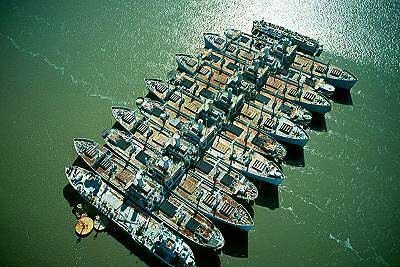
Let's instead consider the minimalist approach that should have been done to save thousands of marine lives taking un-needed beaches that would have given us the B-29 landing area needed. Did we even need to take a Marcus Island of a couple square miles?
No.
The primary weakness of what an aircraft carrier offers is that THEY ARE NOT BIG ENOUGH TO USE AS-IS LAND PLANES. Though huge targets, they still require gadgetry to launch/recover planes--planes that have to be compromised in their performance to carry these items. In WAR--handicapped "sea planes" (in the broadest sense of the word) will always be at a disadvantage in a head-up fight with their land-based equivalents. In some cases, really large land based planes like B-29 heavy bombers cannot even be operated at all from carriers--notwithstanding the post-war USS United States fiasco where the conning tower retracted to get some more wing span room--still a good idea.
The clever British considered a huge aircraft carrier called the Habbukkuk made of "icecrete"--ice and saw dust that would be so large as-is land planes would operate from it since it esentially would be an artificial island. We propose that the same thing could have been done using widely available Liberty ships! Liberty ships were again, a British idea given to we Americans by Commander Ian Fleming of the Royal Navy in 1941 so England wouldn't be starved into submission by the German U-Boat campaign that was sinking cargo ships faster than they could be built. After we began cranking out Liberty ships, the tide really was turned in the Battle of the Atlantic, setting the stage for our invasion of the continent to oust the Nazis and end the war. We produced so many Liberty ships (2, 751) we had them available to throw-away to act as breakers on the Normandy beaches. We built 3 Liberty ships PER DAY during WW2. They were complimented by the faster Victory ships that were also mass-produced.
Liberty Ship Facts
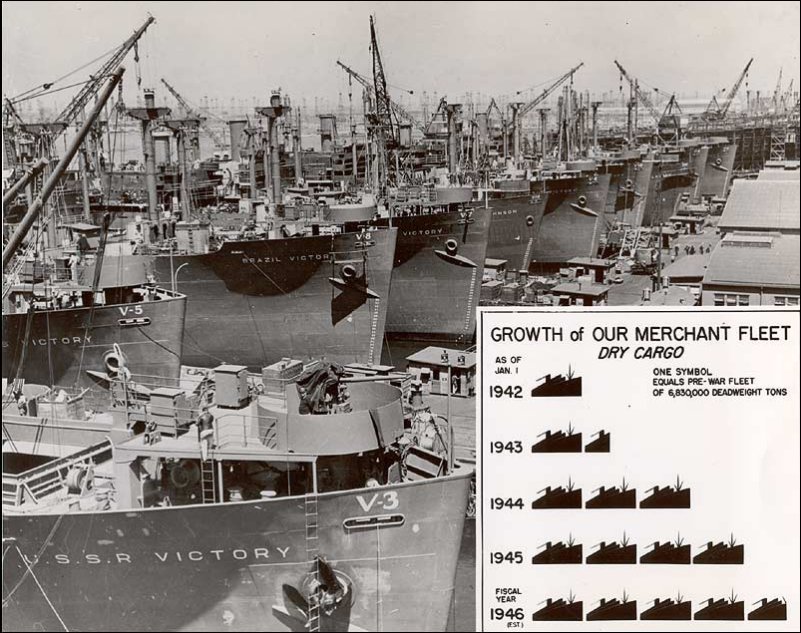
2,751 Liberties built from 1939 to 1945.
globalsecurity.org/military/systems/ship/Liberty-ships.htm
Some Liberty ships were operated by the U.S. Navy and used to supply landings such as the Invasion of Normandy where some of these ships were deliberately scuttled to form breakwaters called "gooseberries," while others supplied the troops on the beaches.
The Merchant Marine served in World War II as a Military Auxiliary. Of the nearly quarter million volunteer merchant mariners who served during World War II, over 9,000 died. Merchant Sailors suffered a greater percentage of fatalities (3.9%) than any branch of the armed forces.
Despite reaping the praise of both President Eisenhower and General Douglas McArthur following the war, many consider the men that served aboard these important vessels the forgotten Sailors of WWII, as those who returned home were denied benefits for injuries and often over-looked in Victory celebrations. In recent years, maritime and naval historians have begun to shed light on the significant contribution of the Liberty Ships and their builders and Sailors. Their contribution to the war effort was tremendous--they were responsible for carrying 2/3 of all cargo leaving U.S. ports in support of the Allies over-seas. This achievement is matched by their contribution to the advancement of shipbuilding technology.
globalsecurity.org/military/systems/ship/Liberty-ships-design.htm
The standard Liberty Ship, categorized by the Maritime Commission as an EC2 ("Emergency Cargo") vessel measured between 400 and 450 feet in length, nearly 60 feet in breadth, drew close to 40 feet of water. Liberty ships had five cargo holds, three forward of the engine room and two aft (in the rear portion of the ship). The standard Liberty ship had a gross tonnage about 7,176 and displacement tonnage 14,300. Each could carry 10,800 deadweight tons (the weight of cargo a ship can carry) or 4,380 net tons (the amount of space available for cargo and passengers). The cargo gear included 5-ton booms for each hold and a 50-ton boom at No. 2 hold and a 15 or 30-ton boom at No. 4. A Liberty ship could carry an amount of cargo equal to 4 trains of 75 cars each. There are 121,000 board feet of lumber in a Liberty ship and 72,000 square feet of plywood.
The engine and hull were developed from British designs - some elements of which were over 60 years old in 1941. Yet, the only significant alteration to the propulsion machinery was the installation of watertube oil-fired boilers to replace the original coal-burning firetube Scotch boilers. Due to a shortage of diesel engines and turbines, the US production of which was designated for its own naval vessels -- the Liberty Ships were commonly powered by triple-expansion reciprocating steam engines. The absence of coal bunkers enabled a superstructure alteration - permitting the use of a single structure amidship (rather than two houses). The,500 horsepower steam engine pushed them through the water at 11 knots (approximately 12.5 miles per hour). The ships had a range of 17,000 miles.
Many Liberty Ships sailed without defensive weapons, especially at the beginning of the program. Later, most were equipped with a 3 inch/50 caliber gun at the bow, a 5 inch/38 caliber at the stern, and eight 20-mm guns - two forward, four on top of the midship house and two aft.
The crew quarters were located amidships (the middle portion of the ship). The basic Liberty ship was originally intended to have a crew of 45, but this was later increased to include gun crews up to 36, making a crew total of 81. Later the figure was amended, increasing the ships crew to 52 and reducing the gun crews to 29. Each Liberty ship carried a crew of between 38 and 62 civilian merchant sailors, and 21 to 40 naval personnel to operate defensive guns and communications equipment. Amidships on the boat deck, were four steel lifeboats each 24 ft long with a capacity of 25 persons.
The Liberty ships were slow and small. Their design had a weakness in the hull that caused ships to sometimes break in two. In 1943, the United States started a new emergency cargo ship program to replace the Liberty ships. The newer ships were bigger and faster with better engines. These ships were designated Victory ships. While the Liberty ships were designed to be the workhorse of the war, Victory ships could continue to be used after the war as part of the regular merchant fleet.
If one judges the Liberty's by performance, rather than looks, the Liberty's design exceeded every expectation (not bad for an "emergency, temporary, expendable" fix).
http://en.wikipedia.org/wiki/SS_Stephen_Hopkins
Another notable Liberty ship was SS Stephen Hopkins, which sank the German commerce raider Stier in a ship-to-ship gun battle in 1942 and became the first American ship to sink a German surface combatant.
http://en.wikipedia.org/wiki/Liberty_ship
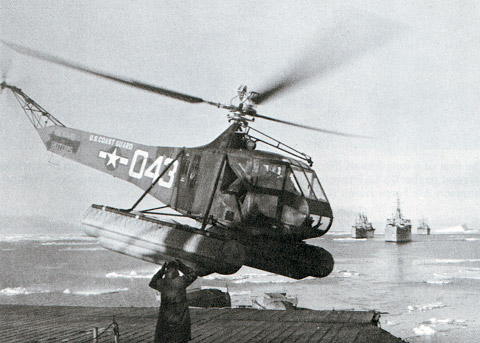
Six Liberty ships were converted at Point Clear, Alabama, by the United States Army Air Forces into floating aircraft repair depots, operated by the Army Transport Service, starting in April 1944. The secret project, dubbed "Project Ivory Soap", provided mobile depot support for B-29 Superfortress and P-51 Mustangs based on Guam, Iwo Jima, and Okinawa beginning in December 1944. The six ARU(F)s (Aircraft Repair Unit, Floating), however, were also fitted with landing platforms to accommodate four R-4 helicopters, creating the first seagoing helicopter-equipped ships, and provided medical evacuation of combat casualties in both the Philippines and Okinawa.[6]
Several designs of mass-produced petroleum tankers were also produced, the most numerous being the T2 tanker series, with about 490 built between 1942 and the end of 1945.
FYI, so here again, another USMC lie exposed--the U.S. Army Air Forces were the first to operate helicopters from surface ships in WW2. They were used in COMBAT to ferry wounded men.
Note that the USAAF did not have enough space on the central Pacific islands of Guam, Iwo Jima and Okinawa (my dad fought there with the Army) and used Liberty ships as floating repair shops.
http://en.wikipedia.org/wiki/Boeing_B-29_Superfortress
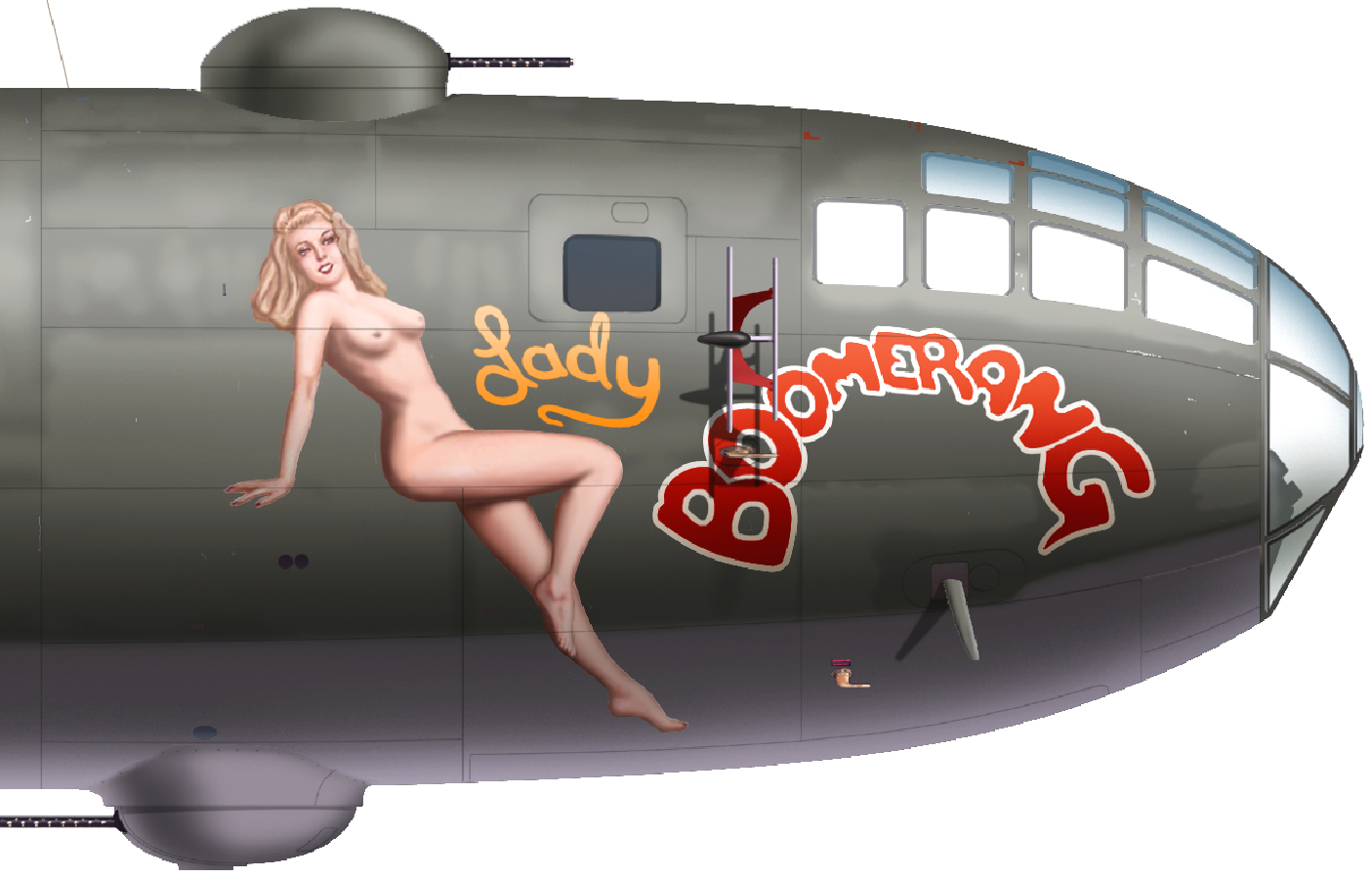
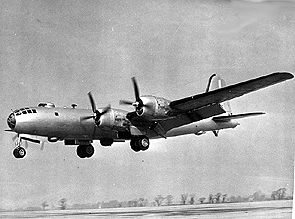
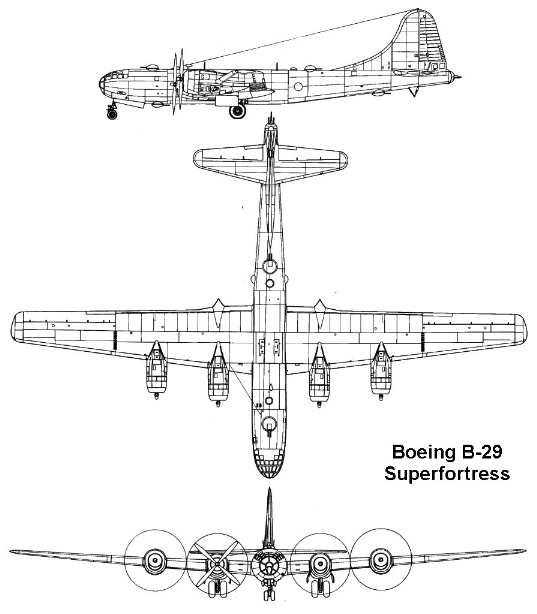
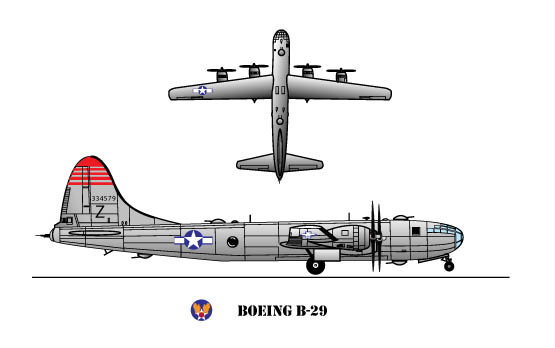
We had thousands to spare and the faster Victory ships were coming online. Here is the Liberty MOB ship idea:
Take 20 x Liberty ships and connect them side-by-side for 120 feet of width, they would be 9, 000 feet long. This would create a very sea-stable "catamaran" design. By diverting their exhaust stacks to the side either left or right, a huge, flat deck could be placed on top--a 9, 000 foot runway at least 100 feet wide. The normal B-29 land runway was 8, 000 feet long on Tinian...
http://en.wikipedia.org/wiki/North_Field_%28Tinian%29

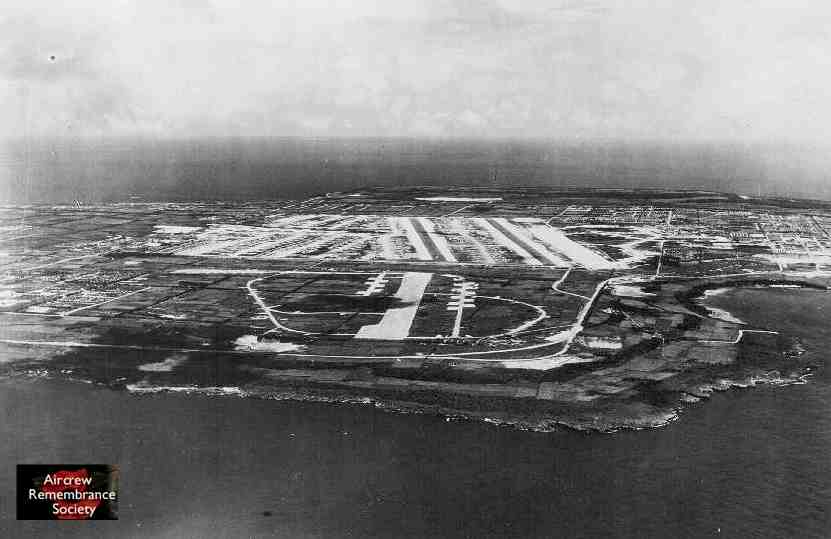
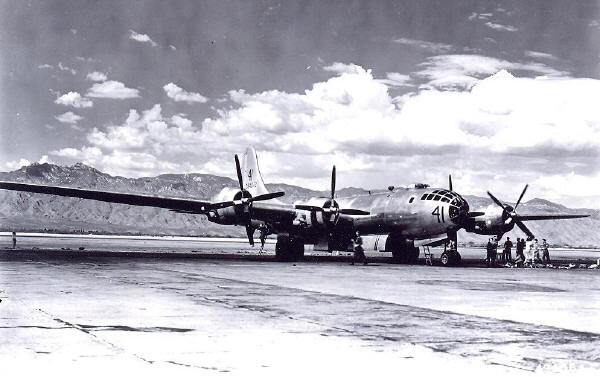
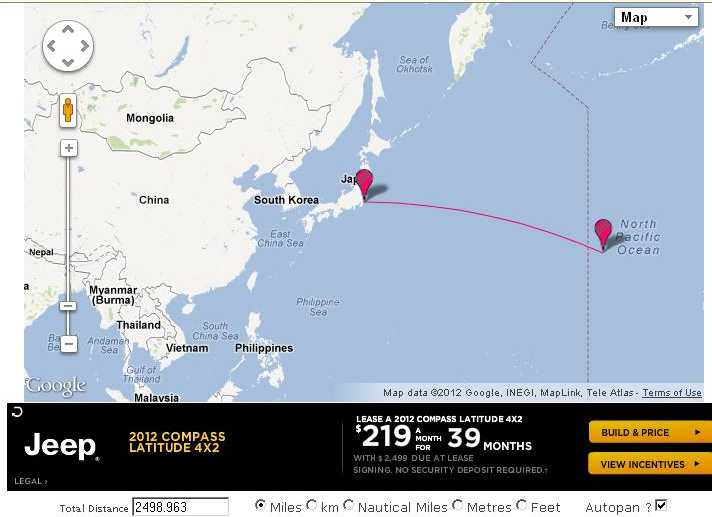
Bombers could have taken off from Midway for Japan (2500 total miles away) and then landed on a LibertyMOB to refuel at 1500 miles, 5 hours later, then taken-off fully loaded for the bombing 1, 000 mile radius, 4 hour mission.
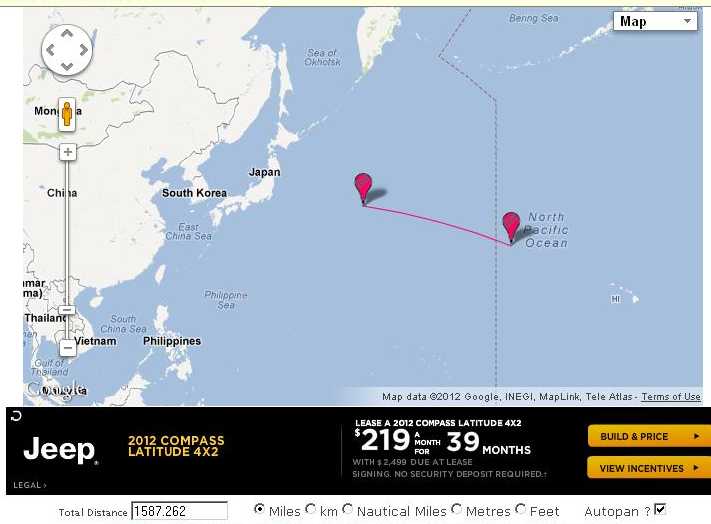
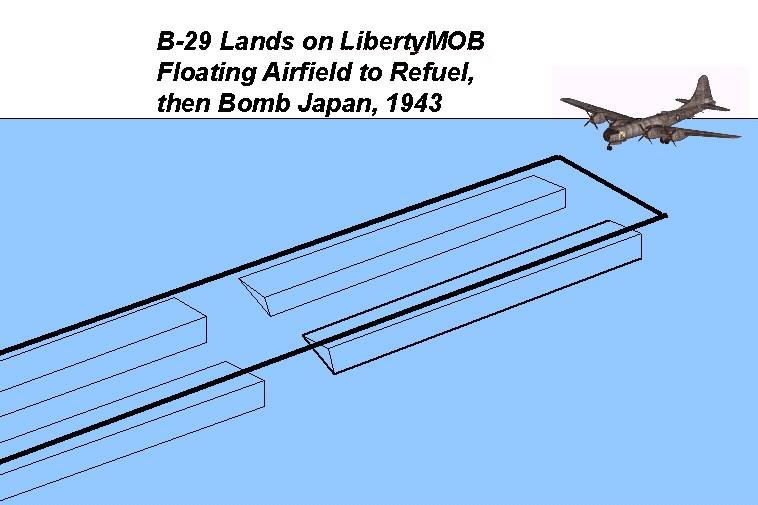
We could have even used 2 crews--one to fly to the LibertyMOB, and another to fly the combat mission. Upon landing, the B-29 is backed up by special tow cables and/or vehicles to have a full-length, up-wind take-off run. When at the stop. the crews switch as the aircraft is fueled by high-pressure hoses. Think a NASCAR type pit stop except for military aviation.
Another option would be to extend the runway length to 18, 000 feet by using 40 x Liberty ships; the B-29s could land and at the midway-point be refueled/switch crews without having to use time backing up as planes overhead circle awaiting their turn to land/refuel.
Of course aircraft mafia whiners will complain that the LibertyMOBs would be attacked by the Japanese. Ya think? Guess who then would be needed to show all their vaunted "aircraft carrier" air cover? In other words, STFU. All the LibertyMOBs are are the aircraft carrier perfected to its logical conclusion: a floating air base. Of course the LibertyMOBs could defend themeselves with their own superior P-51 Mustang day fighters, P-61 Black Widow night fighters etc., but I threw out this bone to the aircraft carrier mafia that if they are so damn dead set on dueling the enemy fleet, what better way to get them to shjow up then to start bombing their home islands from an aryificial island?
Bring Your Own Fighter Escort?

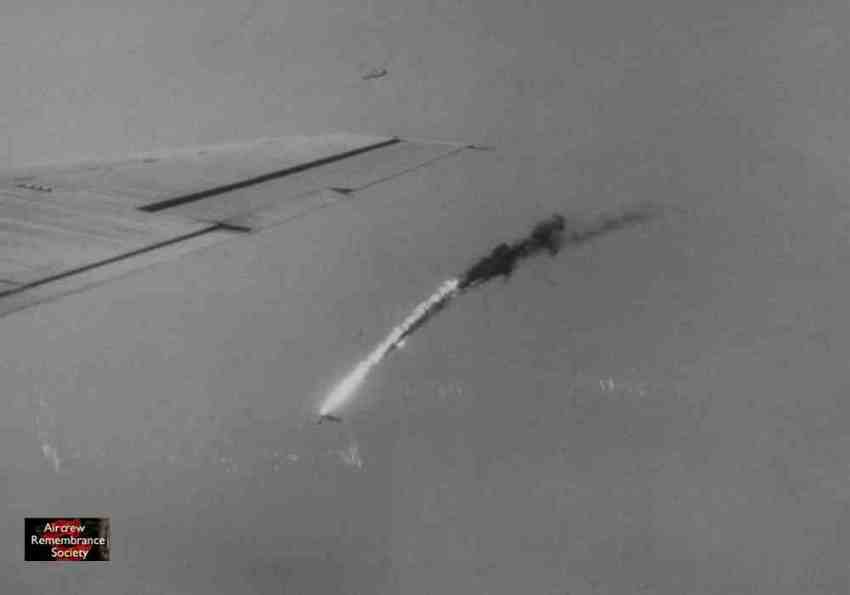
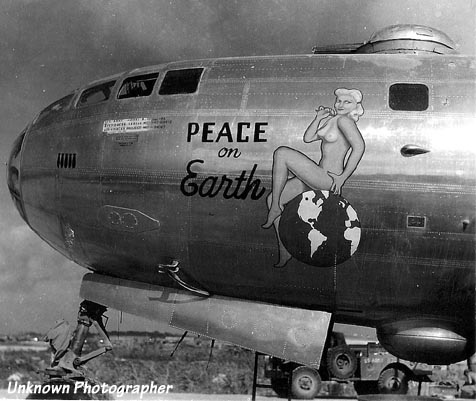
Of course, the LibertyMOB empowers P-51s to escort the heavy bombers by closer basing so they don't get shot-down like the B-29 and crew depicted above that the Jap fighters concentrated on.
Another idea would be to use the B-29 itself as an Airborne Aircraft Carrier and attach a XP-77 parasite fighter (under 3, 000 pounds empty!) on top of the fuselage on a pedestal like the AWACS radar dish is carried by a militarized Boeing 707 airliner today. When the mission is done, the XP-77 parasite fighter matches speed with its B-29 below and re-attaches to its pylon perch.
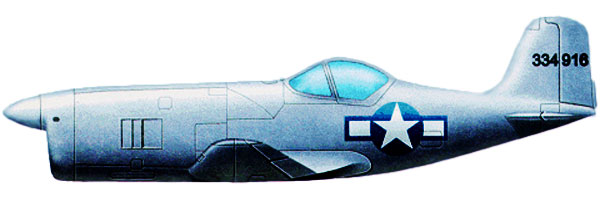

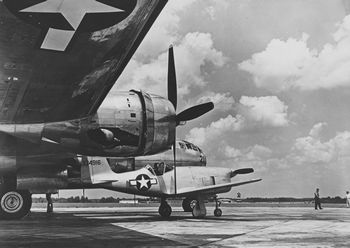
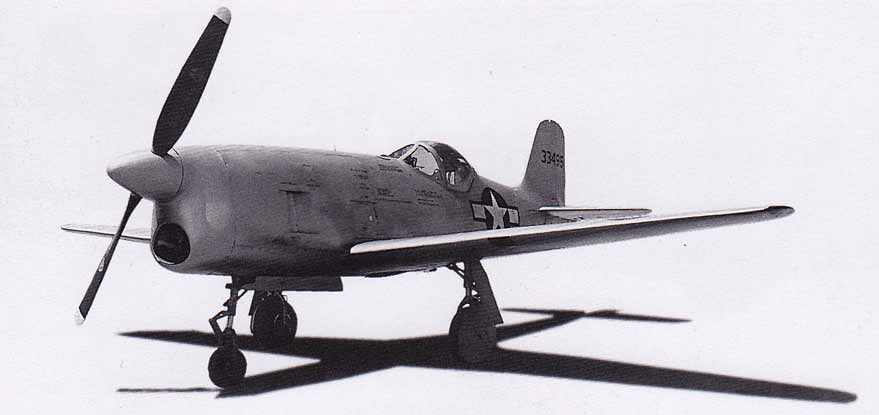
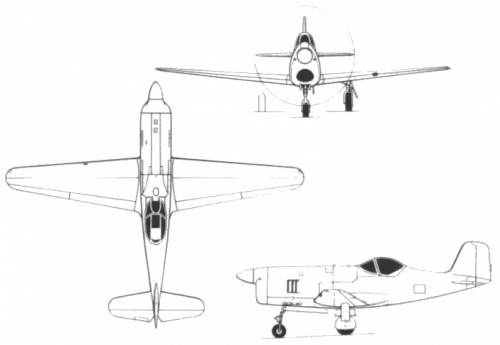
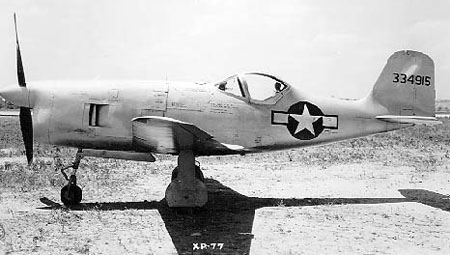
combatreform.org/airborneaircraftcarriers.htm
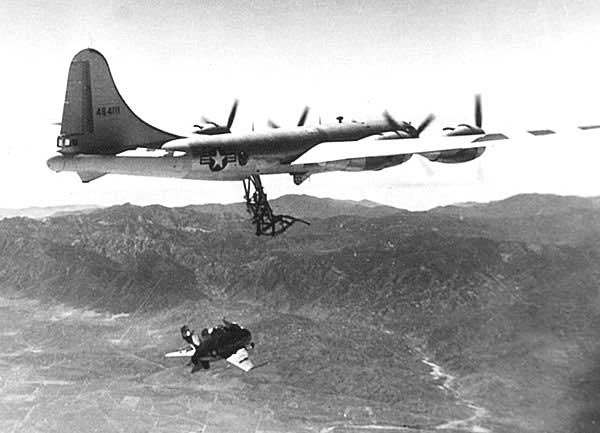
Epilogue
Today, land strapped Japan is already building artificial land masses to meet with the demands of their growing population. They realize today what we should have realized yesterday--that if you don't have the land--BUILD IT--don't throw away lives taking it in bloody beach frontal assaults. The corollary today is don't use land of your allies for long-term Counter-Insurgency operations that enrages the locals when you can better operate from a MOB if you're near water. You're not squatting on anyone's land in international waters.
NOTES
1. Crusade in Europe, pages 22-32
2. Victory Ship Design
globalsecurity.org/military/systems/ship/Victory-ships-design.htm
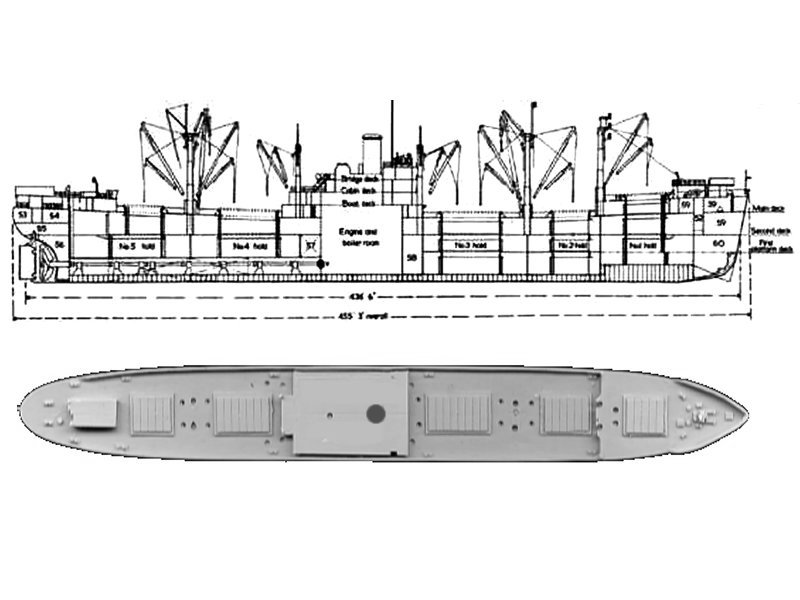
There was an awareness that the Liberty ships were only a stop-gap measure from the very beginning of the wartime shipbuilding effort. Liberty ships were based on an old design of a British freighter, and were limited in speed to about 9 knots because faster turbine engines were not being produced in enough quantity to supply that class of cargo ship. The limited speed meant that they could travel only in convoys, unable to outrun 11-knot enemy submarines. There was also a desire to build wartime cargo ships that could become the mainstay of the U.S. merchant fleet after the war, and this would necessitate a faster turbine-driven ship. Construction of more turbine engines was given a priority as early as 1941.
In the fall of 1942 design was begun on a 15-knot cargo vessel of 10,000 tons deadweight, the AP1. It was stated that the design "should be generally such as to utilize to the greatest possible extent the principles found effective in the production of the present Liberty ship," i.e., its simplicity and standardization.
Where the design required changes in production components, for example, a different shape of steel beam to support the deck , negotiations were needed to convince the steel companies that the necessary retooling of their plants would be of benefit in the future. Because availability of turbine engines was still unsure, the Victory ship was designed so it could be built to accommodate several types of engines, including the untried German-designed Lentz reciprocating engine. In late 1943, decline in the amount of steel available also forced the pace of shipbuilding to slow. This slowdown gave time to change over to a different type production.
The standardized design adopted by the Commission called for a 445-foot by 63-foot steel vessel. Initially designated EC2-S-AP1, the design was re-designated VC2-S-AP1 on April 28, 1943, when the ships were given the "Victory" appellation by which they were henceforth known. The chairman of the Maritime Commission, in an early 1943 speech, noted "We have developed a new emergency ship, the Victory ship, to replace the Liberties. The new ship is designed to permit use of the Lentz engine, turbines, or diesels. Its expected speed is 15-17 knots as against the Liberties' 11 knots, and it will be a good competition ship in post-war, which we cannot claim for the Liberty ship."
The Victory ships ultimately were slightly over 455 feet long and 62 feet wide. Like the Liberty ships, each had five cargo holds, three forward and two aft. The Victories could carry 10,850 deadweight tons (the weight of cargo a ship can carry) or 4,555 net tons (the amount of space available for cargo and passengers), a larger load than the Liberties could manage. Victory ships typically carried a crew of 62 civilian merchant sailors and 28 naval personnel to operate defensive guns and communications equipment. The crew quarters were located amidships.
The Victory ships were different from the Liberty ships primarily in propulsion, the triple-expansion marine steam engine of the latter giving way to more modern, faster turbines or diesels. The AP1 Victory ship was powered by a 5,500-hp steam engine; the AP2 Victory by a 6,000-hp steam engine; the AP3 by a 8,500-hp steam engine; and the AP4 by a diesel engine. Their cruising speed was 15-17 knots (approximately 18.5 miles per hour).
The lines were different, as was the construction of the ships. Hull fractures had claimed some Liberty ships because of their rigidity. In order to resolve the problem, Victory ship hulls were built with frames on 36-inch centers as opposed to stiffer 30-inch centers on the Libertys. This made the hull very rigid. This rigidity caused the hull to fracture in some of the ships. The Victory ships had their hull frames set 36 inches apart. Because the hull could flex, there was less danger of fracture.
Better stability and two enlarged tanks aft of the machinery space that carried fuel, dry cargo, or saltwater ballast did away with the need for fixed ballast. The resultant flexibility of draft meant that an inherent problem of the Liberty ships, a stiffness after removal of wartime equipment, was done away with. Additionally, the Victory ship design included a 'tween deck in three cargo holds, and electric handling of cargo and anchors, as opposed to the steam-driven winches and capstans of the Liberty ships.
VC2-S-AP2 Victory Ship
The SS RED OAK VICTORY was of this type, one of only ten "Boulder Class" Victory ships modified to function as ammunition carriers. It was delivered to the Navy and commissioned the USS RED OAK VICTORY for the duration of the war. The VC2-S-AP2 Victory Ship is a welded steel, full-scantling, screw-propelled, steam-powered vessel 455 feet, 3 inches long overall with a 62-foot beam, a 38-foot depth of hold, and 28-foot draft. The ships were registered at 7,612 tons gross and 4,555 tons net, and displaces 15,200 tons. Designed with a straight, raked stem with a paravane skeg fitted on the forefoot, and a cruiser stern, the ship's lines were radically different from her Liberty Ship predecessors, with a semi-V-shaped bow, and a parallel, 70-foot midbody section.
Transversely framed on 36-inch centers, the ship has a double bottom that carried fuel oil, salt water ballast, and reserve feed water. A Victory Ship had two complete decks, a forecastle deck that extends over the number one hold, and a first platform deck in two of her holds. The ship is subdivided by seven full watertight bulkheads that extend to the main deck with the sole exception of the fore peak bulkhead, which extends to the forecastle deck. The VC2-S-AP2 ships were arranged to carry general cargo in five holds, three forward and two abaft the midship machinery space. Hold No. 1 has a 22-foot, 4-inch by 25-foot hatch; Hold No. 2 has a 22-foot, 4-inch by 24-foot hatch; Hold No. 3 has a 22-foot, 4-inch by 36-foot hatch; Hold No. 4 has a 22-foot, 4-inch by 36-foot hatch; and Hold No. 5 has a 22-foot, 4-inch by 24-foot hatch. The flush main deck is also interrupted by the forecastle deck, the midship house, and a small poop deck house.
A Victory Ship has three masts, each with a masthouse. The ship is cargo rigged to serve every hatchway. The 100-foot, 8-inch high foremast, located at the forecastle bulkhead, serves Hold No. 1. The 109-foot, 4-inch mainmast, located at frame 52 and supported by standing rigging, serves Holds No. 2 and 3. Kingposts at the forward end of the midships house also serve Hold No. 3, while kingposts at the after end of the superstructure serve Hold No. 4. The 104-foot, 11-inch mizzenmast, at frame 122 and supported by standing rigging, serves Holds No. 4 and 5. Cargo was discharged from the five hatchways by means of 14 five-ton booms, the latter two located to serve hatchways fore and aft of the super-structure. The masts and kingposts support 14 five-time booms equipped with single-part topping lifts. The ship also carries two large heavy-lift booms, rated at 30-ton and 50-ton lifting capacity, on the main- and mizzenmasts. The booms serve Holds No. 3 and 4.
A Victory Ship had 12 electric motor-driven cargo winches, clustered in two groups of four around the main-and mizzenmasts and with two located forward and two aft of the superstructure. Ten single-drum, single-speed winches serve the five-ton booms; four single-drum, two-speed winches serve the 30- and 50-ton booms. Each winch is driven by a 50 horsepower, watertight, enclosed motor. The winches have control equipment, resistors and brake arranged on a common bedplate under waterproof enclosures. The single-speed winches have a capacity of 7,450 pounds at 220 feet per minute. The 2-speed winches have a capacity of 7,450 pounds at 220 feet per minute in high gear and 19,000 pounds at 85 feet per minute in low gear. All winches are operated through pedestal controllers conveniently located near the hatchways. The one-speed, double reduction herringbone gear winches have 18- by 20-inch drums and were manufactured by Pacific Iron & Steel Works at Hoisting Machinery, Tacoma, Washington. The winches are driven by 50-hp, 230-volt, 180-amp, 600-rpm motors manufactured by General Electric Co., Schenectady, NY. The double-speed, reduction herringbone gear winches with 20- by 20-inch drums are also manufactured by Pacific Iron & Steel with motors by General Electric.
A Victory Ship had an electric-motor-driven, horizontal-shaft type anchor windlass on the forecastle deck. Manufactured by the Hesse-Ersted Iron Works of Portland, OR, the windlass is capable of raising two anchors simultaneously from a 30-fathom depth of water at a chain speed of 30 feet per minute. The windlass motor, a General Electric compound wound type, is rated at 60-hp, 230-volts, 226-amps, and 600-rpm. Warping heads on the wildcat shaft of the windlass provide the facilities for handling mooring lines.
The Victory Ship's ground tackle includes two 9,500 lb. cast-steel best bowers, stowed in the hawsepipes, and one 3,420 lb. stream anchor stowed on the main deck aft. The anchors were manufactured by Baldt. The anchor chain is 300 fathoms of 2 1/8-inch diameter stud-link cast steel chain, manufactured by Baldt, in two lengths; other lines include a 90-fathom, 1 1/2-inch diameter wire rope stream line; a 130-fathom, 1 3/4-inch diameter wire rope towline; two 73-fathom 1-inch diameter wire rope hawsers; two 73-fathom wire rope warps; and two 73-fathom lengths of 8-inch sisal rope. All of the wire ropes are mounted on reels located on the weather deck.
Other deck machinery includes an electric warping capstan on the main deck aft, with its machinery below. The smooth-barrel, reversible, vertical-motor driven capstan was manufactured by Sellers. It produces a line pull of 20,000 lbs. at a rope speed of 30 feet per minute. The capstan motor is a 35 hp, 230-volt, 138-amp, 600-rpm Westinghouse. RED OAK VICTORY has four 24-foot steel lifeboats, two motor-propelled, with a combined capacity of 124 persons, stowed in gravity-type davits manufactured by the Welin Davit & Boat Corp. of Perth Amboy, New Jersey. An electrical winch, also manufactured by Welin, is provided for each davit, driven by motors manufactured by General Electric. In addition to the lifeboats, four 20-person life rafts, mounted on skids fore and aft of the midships house, and two 15-person life floats, mounted aft on the deckhouse, are available for lifesaving.
A Victory Ship was armed with 6 single 20mm Oerlikon guns, a 3-inch/50-caliber gun forward, and a 5-inch/3-caliber gun aft. The mounts for each weapon, include the circular steel splinter shields for the bow and stern guns. The majority of the space in the poop deckhouse was for the ship's 28-member Armed Guard, which manned the guns. Their quarters and mess were at the main deck level, while below, accessible by trunk, is the magazine, with shell hoist.
Accommodations are provided for 62 officers and crew in the midships house. The captain's stateroom and office are on the cabin deck, starboard side. The quarters for deck officers, engineers and radio operators are on the cabin and boat decks. The quarters for the crew are on the main deck. The officers' mess and pantry are located at the after end of the deckhouse on the starboard side of the boat deck. The crew's mess and pantry are located on the deck below the officers' mess. The galley is located at the after end of the deckhouse on the main deck. The hospital is on the portside on the main deck. The quarters for both the officers and crew are comfortably and conveniently arranged. Built-in berths are provided for the officers' staterooms and pipe berths for the hospital and crew's quarters.
The galley is equipped with oil-burning ranges manufactured by the Washington Stove Works of Everett, Washington, two steam-jacketed kettles, a Hobart mixer, manufactured by that Troy, New York, company, a vegetable peeler manufactured by the Anstice Co. of Rochester, New York, and a refrigerator manufactured by Bailey. There are also refrigerators in the officers' pantry and aft pantry. Steward's stores, dry stores, and refrigerated stores are located on the second deck, admidships.
The wartime issue equipment, included: the radio equipment the high frequency, low frequency, emergency frequency transmitters, high receiver, low receiver, alarm signal keyer, auto alarm, and crystal receiver, all manufactured by Federal Tel. & Radio Corp. of Newark, New Jersey, and the radio receiver and radio direction finder in the chart room. The gyrocompass, bearing stands, and repeater compasses, were all manufactured by the Dodge Division of the Chrysler Corporation of Detroit.
The bridge is completely outfitted, with magnetic compass in a compensating binnacle, engine room telegraphs, bells, fog horn, rudder angle indicator, echo depth sounder, and clinometer. Telephones for shipboard communication, manufactured by Hose McCann remain in working condition. The ship's wartime issue Maytag washers, and the machine shop in the engineering spaces, with a lathe, drill press, and grinder and all spare parts, complete the fully functional, operational appearance.
Ventilation below decks is naturally supplied through four 36-inch cowls, two 24-inch cowls, and two 18-inch cowls, with each kingpost also serving as an exhaust trunk from the holds with 30-inch diameter Breidert exhaust heads installed at the top of each kingpost. Two 20,000 axial flow supply fans with ducts lead to several terminals in the machinery spaces, with a single 12,000 axial flow fan with ducts leading from the heated space.
The main propulsion unit is housed midship, with a cross-compound, double-reduction geared, impulse-reaction type marine steam turbine unit rated at 6000 shaft horsepower, manufactured by Westinghouse, driving a single screw at a speed of 100 rpm. The shafting, forged steel and 16 inches in diameter, runs aft to the manganese bronze, four blade, right hand screw. Manufactured by Dorance on August 31, 1944, the 18-foot, 3-inch diameter screw weighs 29,765 lbs., has a pitch of 17' 6" and drives a maximum speed of 15 knots.
Steam is provided by two sectional-header, single-pass design boilers manufactured by Babcock & Wilcox. Rated at 525 psi, with an operating pressure of 465 psi, the boilers produce 27,500 pounds of steam per hour at 750 degrees, with a furnace volume of 450 cubic feet. The boilers are 12 sections wide and are 39-feet, 6-inches athwartship by 11-feet, 8-inches fore and aft, and 21-feet, 3-inches overall height to the top of the economizers. Fitted with interdeck superheaters and economizers, each boiler is fired with water-cooled side walls and refractory in the front and rear walls and floors.
Electrical power is provided by an inboard and outboard turbo-generators, the turbines manufactured by the Joshua Hendy Iron Works of San Francisco, California, and the generators manufactured by the Allis-Chalmers Company, Milwaukee, Wisconsin. The three-wire marine direct current generators produce 300-kilowatts, with 120 and 2140 volts and 1250 amps and 1200-rpm. The ship also has emergency diesel generators in the engine room and in the emergency diesel room. The steering gear, a slide electro-hydraulic, double-ram type, was manufactured by the Baldwin Locomotive Company, and is located aft.
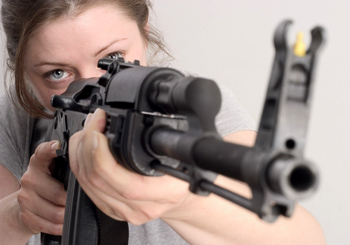 James Bond is Real.
James Bond is Real.